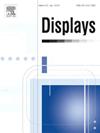UnSP:利用不确定性引导的自定进度学习改进事件到图像的重建
IF 3.7
2区 工程技术
Q1 COMPUTER SCIENCE, HARDWARE & ARCHITECTURE
引用次数: 0
摘要
由事件相机产生的异步事件与传统相机相比,具有时间分辨率高、动态范围广等优点。传统的事件-图像重建方法采用计算机视觉技术,在事件流和重建图像之间建立对应关系。尽管取得了巨大的成功,但这些方法忽略了对非可信事件框架的过滤,因此产生了令人不满意的重建结果。在本文中,我们提出了一种即插即用模型,通过使用不确定性引导自定节奏学习(称为UnSP)来微调事件到图像的重建过程。UnSP的关键观察是,不同的事件流虽然对应于一个共同的重建图像,但在事件到图像重建网络的训练过程中却起到了不同的作用(例如,在网络的不同训练阶段提取形状、强度、细节)。通常,UnSP基于三个度量引起的重建误差对每个事件框架提出不确定性建模,然后以自定节奏的学习方式过滤自信事件框架。在事件相机数据集的6个子集上进行的实验表明,UnSP可以与任何事件到图像重建网络无缝结合,并在定量和定性结果上都有显著提高。综上所述,UnSP的不确定性驱动自适应采样和自学习机制,加上其即插即用的能力,增强了事件到图像重建的鲁棒性、效率和通用性。代码可从https://github.com/wangsfan/UnSP获得。本文章由计算机程序翻译,如有差异,请以英文原文为准。
UnSP: Improving event-to-image reconstruction with uncertainty guided self-paced learning
Asynchronous events, produced by event cameras, possess several advantages against traditional cameras: high temporal resolution, dynamic range, etc. Traditional event-to-image reconstruction methods adopt computer vision techniques and establish a correspondence between event streams and the reconstruction image. Despite great successes, those methods ignore filtering the non-confident event frames, and hence produce unsatisfactory reconstruction results. In this paper, we propose a plug-and-play model by using uncertainty guided self-paced learning (dubbed UnSP) for finetuning the event-to-image reconstruction process. The key observation of UnSP is that, different event streams, though corresponding to a common reconstruction image, serve as different functions during the training process of event-to-image reconstruction networks (e.g., shape, intensity, details are extracted in different training phases of networks). Typically, UnSP proposes an uncertainty modeling for each event frame based on its reconstruction errors induced by three metrics, and then filters confident event frames in a self-paced learning fashion. Experiments on the six subsets of the Event Camera Dataset shows that UnSP can be incorporated with any event-to-image reconstruction networks seamlessly and achieve significant improvement in both quantitative and qualitative results. In summary, the uncertainty-driven adaptive sampling and self-learning mechanisms of UnSP, coupled with its plug-and-play capability, enhance the robustness, efficiency, and versatility for event-to-image reconstruction. Code is available at https://github.com/wangsfan/UnSP.
求助全文
通过发布文献求助,成功后即可免费获取论文全文。
去求助
来源期刊

Displays
工程技术-工程:电子与电气
CiteScore
4.60
自引率
25.60%
发文量
138
审稿时长
92 days
期刊介绍:
Displays is the international journal covering the research and development of display technology, its effective presentation and perception of information, and applications and systems including display-human interface.
Technical papers on practical developments in Displays technology provide an effective channel to promote greater understanding and cross-fertilization across the diverse disciplines of the Displays community. Original research papers solving ergonomics issues at the display-human interface advance effective presentation of information. Tutorial papers covering fundamentals intended for display technologies and human factor engineers new to the field will also occasionally featured.
 求助内容:
求助内容: 应助结果提醒方式:
应助结果提醒方式:


